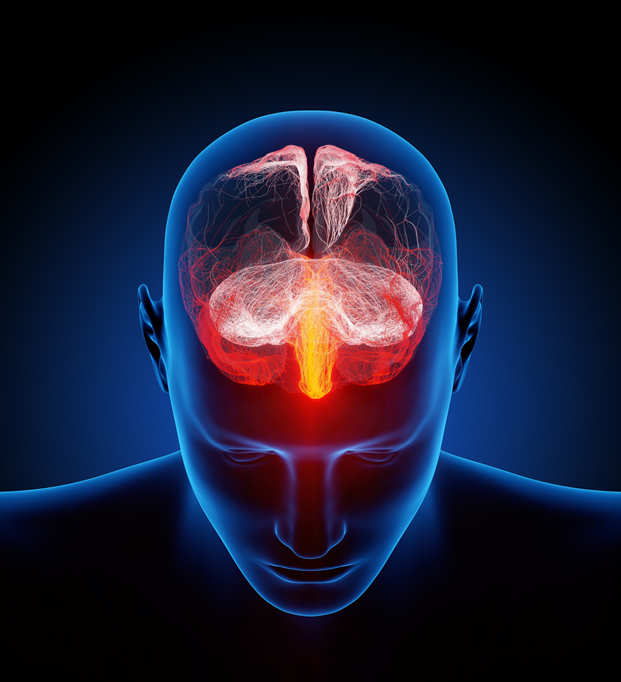
So far, the evidences on which we can count have provided relatively solid ground to our steps, at the end we have only transported the chirping intercepted from the real environment to the virtual environment.
Virtual environment within which we can, if not really hear it again, evoke it as we please, and make on the chirping a considerable series of operations: some we have seen in the part dedicated to phylogeny, others we are doing now, a piece of our narration relates to it, we can deal with it regardless of whether the chirping is produced in the real environment.
The operations we have accomplished and we are making about the chirping are actions guided by our neurograms, stable configurations of neural instructions: we called Thought System the integrated set of our neurograms, keeping it distinct from the neural codes, from the other neural instructions that make up the virtual environment and the object we're dealing with.
Although we do not know exactly how our neural system, so to speak, produces the virtual environment in which each of us is located (we have defined it emergent property of the neural system, it is technically correct, but it does not tell us anything about how this happens), however, we can accept that there is a difference between the neural instructions that "produce" the virtual environment, and with it the virtual chirping, and the neural instructions (the neurograms) that we use to deal with the virtual environment and the virtual chirping .
The difference we can identify is provided by the evidence that the second, the, so to speak, operational neurograms, are at work on the first ones, themselves neural codes too, which in turn, with some evidence, are not at work on other neural codes.
These former neural codes have carried out and carry out the invaluable work of integrating and storing sensorial and motorial data produced by our systems more in direct contact with the real environment, coordinating the action of our organism to the flow of environment configurations.
They are the set of those elements that make possible the extraordinary wonder constituted by the unconditioned reflexes (let’s only think of the reflex of sucking for the newborn), integrating the data of the sensorial, motorial, nociceptive and proficeptive systems, in plexus-sequences of life-saving actions related to the real environment configuration which we are dealing with, actions that change to changing of the environment configurations.
Plexus-sequences of actions that do not need thought, neither to be conceived in order to be implemented: it is the dance of life, organism and environment, living organism that does its best to survive, acting in the most appropriate way in correlation with changes in its real environment.
Real environment of which the organism itself is also part, of course, with the inevitable changes that affect it, changes that relate to what we call hunger, thirst, tiredness, sexual desire...
The neurograms that we have gathered in the Thought System, in short, "work" on the codes, elaborating useful variants, thus enriching our possibilities of action in view of our survival.
We have called it Thought System, and we have to account why we identify it as a system: from our premises we must be able to trace a stable configuration of a set of elements, at least some stable relationship between the elements that make it up.
We can identify some stable relationships between neurograms (and plexus of neurograms) that make up the Thought System by observing what the Thought System is firmly and regularly able to do with respect to the elements of the virtual environment which it has to deal with.
For example, it can eliminate, multiply, reduce in size, increase, warp, move, place them in different sequences, decompose them into parts, and reaggregate them into different "objects"...
The list is more extensive, but not much: if these (and other) are the actions that the Operational Thought System accomplishes, then we can deduce that there are stable relationships between the neurograms that constitute the Operational Thought System.
To deal with the virtual environment, obtaining modifications of which anyone of us can directly test, the Operational Thought System activates neurograms according to patterns of relationship, plexus sequences that we must necessarily recognize as guides, neural instructions that guide the different actions (operations) that the Operational Thought System can accomplish, in search of the best action for us, that action that can be developed in the real environment by our entire organism.
We will have to give up to take care of how from the virtual lab we return to the real environment, we carry out our tests, and then we go back to the lab for further setups, and then again in the real environment, until we get the desired result, except for this last point: the real environment and our interaction with it, at the end of the process, coincides with the virtual environment and with the interaction that we have finished modifying.
The work is accomplished, but the point that is important to emphasize here is that the fulfillment of the work generally accompanies a more or less intense satisfaction: something that does not surprise us, since the accomplished work means we have been able to obtain an environment configuration favorable to us, condition punctually reported by our proficeptive system.
The aspect that is likely to be overlooked is precisely the one related to the identity, or at least strong similarity of the configurations of the environments that at that point we will have obtained: not only we did get a real environment configuration supportive and favorable for our existence, but we have obtained this in conjunction with that important condition which, for brevity, I preferre to define as respect for the Principle of Sameness.
It is an important condition because it is also integrated with our alarm and directioning systems, the nociceptive and proficeptive systems, systems that punctually record and so to speak "push" to the action in a univocal way, depending on the condition in which the two environments are substantially equal (proficeptive system) or are not at all similar (nociceptive).
In short, when real and virtual are equal or very similar we are "content" of the condition, when they are not then we are concerned: maybe it is a false alarm, but it is an ancient measure of security, to protect the good functioning of our thinking.
In addition, it is, simultaneously, a mighty, we can say, motivational source: if the two environments are not alike, we need to do something, everything we can to obtain sameness in the shortest possible time, for our sake.
